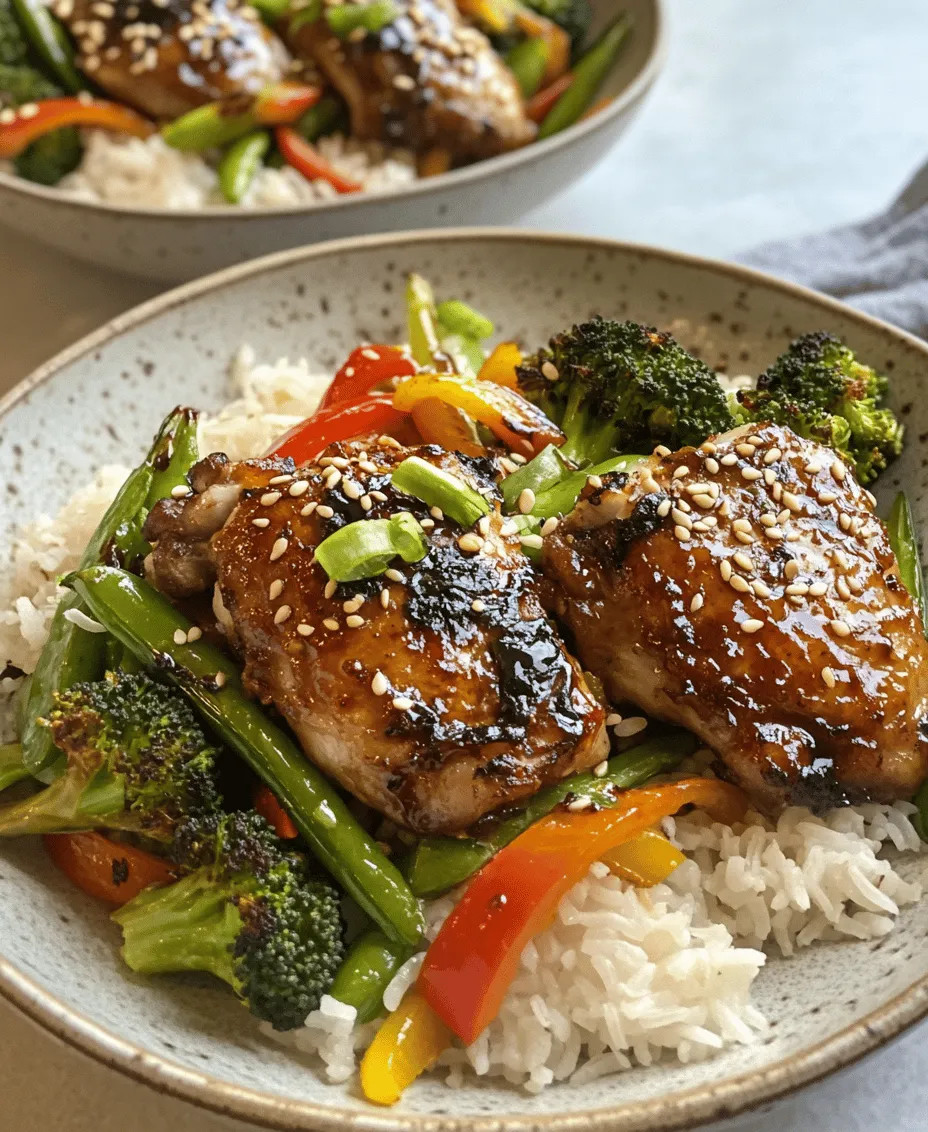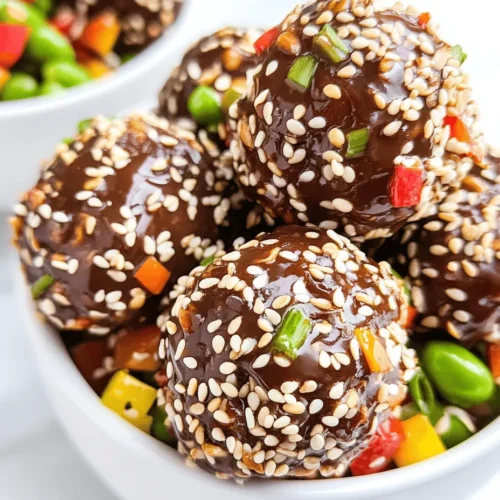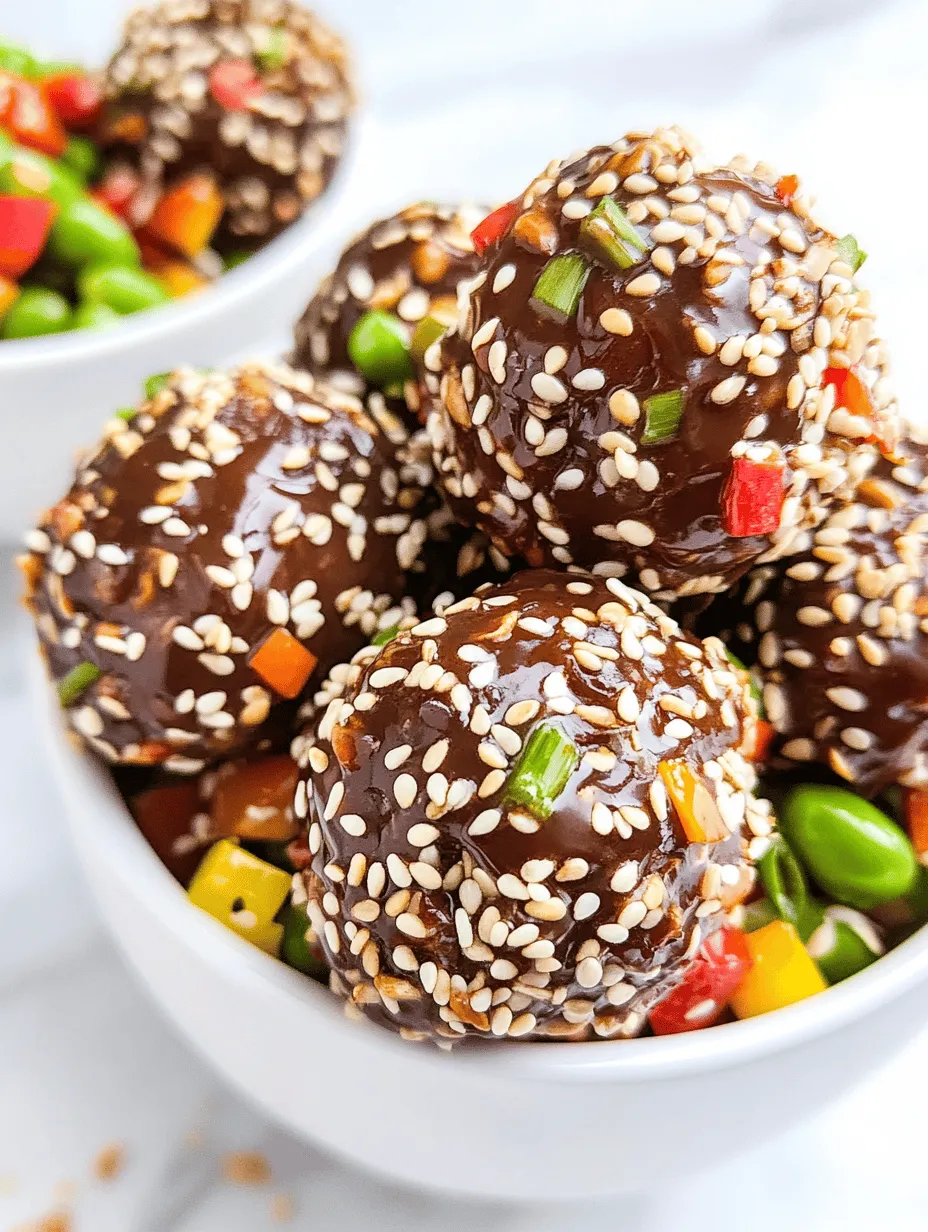If you’re looking for a meal that combines comfort, flavor, and versatility, look no further than Sticky Chicken Rice Bowls. This dish perfectly marries succulent chicken with fragrant jasmine rice and a vibrant medley of vegetables, creating a visually appealing and satisfying meal. Not only is it a feast for the taste buds, but it also offers a delightful aroma that fills your kitchen as it cooks, making it an ideal recipe for family dinners or casual get-togethers.
What sets Sticky Chicken Rice Bowls apart is their adaptability. Whether you prefer your bowls loaded with fresh greens, colorful bell peppers, or crunchy carrots, the options are endless. You can easily customize this recipe to suit your taste preferences and dietary needs, ensuring that everyone at the table finds something to enjoy. Plus, the preparation is straightforward, making this dish perfect for both novice cooks and seasoned chefs alike.
Understanding the Ingredients
To create the ultimate Sticky Chicken Rice Bowls, it’s essential to understand the role of each ingredient involved in the recipe. Let’s break down the key components that contribute to the dish’s deliciousness.
Chicken Thighs: The Star of the Dish
At the heart of this dish are the chicken thighs, which are renowned for their rich flavor and tender texture. Unlike chicken breasts, which can dry out during cooking, chicken thighs remain moist and juicy, thanks to their higher fat content. This makes them an ideal choice for a dish that requires some caramelization and depth of flavor. When cooked correctly, chicken thighs can soak up the marinade beautifully, making each bite flavorful and satisfying.
Sticky Sauce: The Sweet-Savory Blend
The magic of Sticky Chicken Rice Bowls lies in the sauce, which is a harmonious blend of soy sauce, honey, and sesame oil. Soy sauce serves as the base, imparting a savory umami flavor that complements the chicken perfectly. Honey adds a natural sweetness, balancing the saltiness of the soy sauce and creating that coveted sticky texture. Finally, sesame oil contributes a delightful nuttiness that elevates the dish to new heights. Together, these ingredients create a sticky glaze that clings to the chicken and infuses every bite with flavor.
Jasmine Rice: The Fragrant Base
No rice bowl is complete without the perfect rice, and jasmine rice fits the bill flawlessly. This long-grain rice is known for its subtle floral aroma and slightly sticky texture when cooked, making it an excellent companion for the sticky chicken. Its delicate, nutty flavor enhances the overall dish, providing a great backdrop for the bold flavors of the chicken and sauce. Additionally, jasmine rice is quick to cook, making it a convenient choice for busy weeknight meals.
Vibrant Vegetables: Nutritional Boost
To add both color and nutrition to your Sticky Chicken Rice Bowls, a medley of vegetables is essential. Common choices include bell peppers, carrots, and snap peas, but you can use any vegetables you have on hand. Bell peppers add a crunch and sweetness, while carrots offer a slight earthiness and a beautiful pop of orange. Snap peas provide a refreshing snap that contrasts nicely with the tender chicken and fluffy rice. Including a variety of vegetables not only enhances the visual appeal of the dish but also boosts its nutritional value, making it a wholesome meal option.
Preparing the Sticky Chicken
Now that we’ve covered the ingredients, it’s time to dive into the preparation of the sticky chicken itself. This process is crucial for developing flavor and ensuring that your chicken is tender and caramelized.
Marinating the Chicken
The first step in preparing the sticky chicken is marination. This process allows the chicken to absorb the flavors of the sauce, resulting in a more delicious dish. Here’s how to marinate your chicken thighs:
1. Prepare the Marinade: In a mixing bowl, combine soy sauce, honey, sesame oil, minced garlic, and grated ginger. Whisk the ingredients together until well blended. This marinade will infuse the chicken with savory and sweet notes, creating that signature sticky flavor.
2. Marinate the Chicken: Place the chicken thighs in a resealable plastic bag or a shallow dish and pour the marinade over them. Ensure that each piece of chicken is thoroughly coated. Seal the bag or cover the dish and refrigerate for at least 30 minutes, although marinating for a few hours or overnight will yield even better results. The longer the chicken marinates, the more flavorful it will become.
Cooking Techniques for Tender, Caramelized Chicken
Once the chicken has marinated, it’s time to cook it to perfection. Here are some tips to ensure your chicken is tender and caramelized:
1. Preheat the Pan: Start by heating a large skillet over medium-high heat. Adding the chicken to a hot skillet helps achieve a nice sear, which enhances the flavor and texture.
2. Sear the Chicken: Remove the chicken from the marinade, allowing any excess liquid to drip off. Place the thighs in the hot skillet, skin-side down if applicable. Sear the chicken for about 5-7 minutes, or until it develops a golden-brown crust. This step is crucial for creating that caramelized exterior.
3. Cook Through: Flip the chicken and reduce the heat to medium. Continue cooking for another 5-7 minutes, or until the internal temperature reaches 165°F (75°C). This ensures that the chicken is fully cooked while remaining juicy.
4. Thicken the Sauce: Once the chicken is cooked, remove it from the skillet and set it aside to rest. Pour the remaining marinade into the skillet and bring it to a simmer. Allow it to cook for a few minutes until it thickens into a sticky sauce. Drizzle this sauce over the chicken before serving for an extra burst of flavor.
Cooking the Rice
While the chicken is marinating and cooking, you can prepare the jasmine rice. Here’s how to cook it perfectly every time:
Step-by-Step Instructions for Cooking Jasmine Rice
1. Rinse the Rice: Begin by measuring out the desired amount of jasmine rice. Rinsing the rice under cold water is essential as it removes excess starch, which can lead to gummy rice. Use a fine-mesh sieve or a bowl to rinse the rice until the water runs clear.
2. Water-to-Rice Ratio: The general rule for cooking jasmine rice is to use a 1:1.5 water-to-rice ratio. For every cup of rice, add 1.5 cups of water. This ratio ensures that the rice cooks evenly and absorbs the right amount of moisture.
3. Cooking Methods: You can cook jasmine rice on the stove, in a rice cooker, or in an Instant Pot:
– Stovetop: In a medium saucepan, combine the rinsed rice and water. Bring to a boil, then reduce the heat to low, cover, and simmer for about 15 minutes, or until the water is absorbed. Remove from heat and let it sit, covered, for an additional 5 minutes before fluffing with a fork.
– Rice Cooker: Simply add the rinsed rice and water to the rice cooker, turn it on, and let it do the work. It will automatically switch off when the rice is done.
– Instant Pot: Combine rinsed rice and water in the Instant Pot, seal the lid, and cook on high pressure for 4 minutes. Allow for a natural release for 10 minutes before releasing any remaining pressure.
4. Fluffing the Rice: Once the rice is cooked, use a fork to fluff it gently. This helps separate the grains and ensures a light, fluffy texture.
With your sticky chicken and beautifully cooked jasmine rice ready, you can now assemble your Sticky Chicken Rice Bowls. The combination of tender chicken, fragrant rice, and colorful vegetables creates a meal that is not only visually appealing but also a delight to eat. Stay tuned for the next part of this article, where we will explore the assembly of these delicious bowls and additional serving tips!

Sautéing the Vegetable Medley
To elevate your Sticky Chicken Rice Bowls, you’ll need a colorful and crisp vegetable medley that not only adds flavor but also enhances the nutritional value of your meal. Selecting and preparing fresh vegetables is crucial for achieving that perfect balance of taste and texture.
Tips for Selecting and Preparing Fresh Vegetables
When shopping for vegetables, look for vibrant, firm produce that shows no signs of wilting or browning. For this dish, consider using bell peppers, broccoli, snap peas, and carrots. Here are some tips to ensure you choose the best:
– Bell Peppers: Choose peppers that are shiny and firm. A mix of colors (red, yellow, green) adds visual appeal.
– Broccoli: Opt for deep green florets without yellowing or browning, as these indicate freshness.
– Snap Peas: Select peas that are bright green and snap easily when bent.
– Carrots: Look for firm, unblemished carrots for the best crunch and sweetness.
Preparation is equally important; wash all vegetables thoroughly to remove any dirt or pesticides. For uniform cooking, cut each vegetable into similar-sized pieces. This ensures even sautéing, allowing each bite to have a consistent texture.
Cooking Techniques for Maintaining Color and Crunch
To maintain the vibrant colors and crunchy textures of your vegetables during cooking, follow these steps:
1. High Heat: Use a large skillet or wok over medium-high heat. This allows the vegetables to cook quickly without becoming soggy.
2. Minimal Oil: Use just enough oil to coat the pan—about 1-2 tablespoons of vegetable or sesame oil. This prevents the vegetables from absorbing too much fat while still allowing them to brown slightly.
3. Sautéing in Batches: If you have a lot of vegetables, sauté them in batches. Overcrowding the pan can lead to steaming instead of sautéing, which results in mushy veggies.
4. Adding Vegetables Gradually: Start with the vegetables that take longer to cook, like carrots and broccoli, and add quicker-cooking ones like snap peas towards the end. This technique helps maintain their crunch.
Seasoning Suggestions to Enhance the Vegetable Flavors
Seasoning your vegetable medley is key to enhancing their natural flavors. Consider these options:
– Salt and Pepper: A basic combination that brings out the inherent sweetness of the vegetables.
– Garlic and Ginger: Adding minced garlic and freshly grated ginger while sautéing provides a fragrant aroma and an extra layer of flavor.
– Soy Sauce or Tamari: A splash of soy sauce towards the end of cooking adds umami depth and complements the chicken beautifully.
– Sesame Oil: Drizzling a little sesame oil right before removing the vegetables from heat adds a nutty flavor that pairs well with Asian-inspired dishes.
Assembling the Bowls
Once your chicken is cooked and your vegetable medley is sautéed to perfection, it’s time to assemble your Sticky Chicken Rice Bowls. Presentation is essential in making your dish visually appealing and appetizing.
Creative Ideas for Plating and Presentation
To create a stunning bowl, start with a base of fluffy rice—white, brown, or jasmine rice works beautifully. Layer the elements in a visually appealing way:
1. Base Layer: Spoon a generous portion of rice into the bowl; this is your foundation.
2. Chicken Placement: Arrange the sticky chicken on one side of the rice, allowing some sauce to drizzle over the rice for added flavor.
3. Vegetable Medley: Artfully pile the sautéed vegetables on the other side of the rice. Use contrasting colors to create an eye-catching display.
4. Garnishes: Finish off the bowl with garnishes like toasted sesame seeds and thinly sliced green onions. Not only do they add a pop of color, but they also contribute texture and freshness.
Importance of Layering Flavors and Textures in the Bowl
Layering flavors and textures is essential in creating a harmonious dish. The sticky chicken provides a sweet and savory base, while the crunchy vegetables add freshness. The rice serves as a neutral backdrop, absorbing the flavors without overpowering them.
For added texture, consider incorporating nuts such as chopped peanuts or cashews, which can be sprinkled on top for a delightful crunch. Each bite should provide a mix of savory, sweet, crunchy, and soft elements, making the dining experience enjoyable and satisfying.
Serving Suggestions
Sticky Chicken Rice Bowls are versatile and can be served on various occasions, making them an excellent addition to your meal rotation.
Ideal Occasions for Serving Sticky Chicken Rice Bowls
These bowls are perfect for family dinners, casual gatherings, or even meal prep for the week. They are quick to assemble and can be customized to your family’s preferences, making them a crowd-pleaser.
Additionally, consider serving them during:
– Weeknight Dinners: A quick yet satisfying meal after a long day.
– Meal Prepping: Prepare multiple servings in advance for easy lunches throughout the week.
– Themed Dinner Nights: Pair with Asian-inspired appetizers for a complete dining experience.
Variations and Substitutions to Cater to Dietary Preferences
The beauty of Sticky Chicken Rice Bowls lies in their adaptability. Here are some substitutions to cater to various dietary preferences:
– Vegetarian or Vegan: Substitute chicken with tofu or tempeh marinated in the same sticky sauce. You can also add more vegetables or even fruits like pineapple for added sweetness.
– Gluten-Free: Use tamari instead of soy sauce to keep the dish gluten-free. Ensure the rice is prepared without any gluten-containing sauces.
– Low-Carb: For a lower-carb option, swap rice for cauliflower rice or a mix of leafy greens.
Pairing Options
To round out your meal, consider pairing your bowls with complementary side dishes or beverages:
– Side Dishes: Serve with a light Asian cucumber salad or spring rolls for a refreshing contrast.
– Beverages: Pair with green tea or a light, fruity sake to complement the flavors of the dish.
Nutritional Value
Understanding the nutritional value of your Sticky Chicken Rice Bowls is crucial for creating a balanced meal.
Breakdown of the Nutritional Content
A typical serving of Sticky Chicken Rice Bowls includes:
– Calories: Approximately 450-600 calories, depending on portion sizes and ingredients.
– Protein: Around 30-35 grams from chicken and added tofu or nuts, providing essential amino acids.
– Carbohydrates: About 60 grams primarily from rice and vegetables, offering energy.
– Fats: 15-20 grams from cooking oil and garnishes, primarily healthy fats if using sesame or olive oil.
Discussion of Health Benefits of the Ingredients Used
The ingredients in Sticky Chicken Rice Bowls offer numerous health benefits:
– Chicken: A lean source of protein that helps in muscle repair and growth.
– Vegetables: Packed with vitamins, minerals, and antioxidants, contributing to overall health and wellness.
– Rice: A great source of carbohydrates, providing energy and fiber, especially if brown rice is used.
– Sesame Seeds: Rich in healthy fats, calcium, and other essential nutrients, they enhance the nutritional profile of the dish.
Insights into Creating a Balanced Meal
To create a balanced meal, ensure you include a good portion of protein, healthy fats, and plenty of vegetables alongside your carbohydrates. This combination will keep you fuller for longer and provide sustained energy throughout the day.
Conclusion
Sticky Chicken Rice Bowls are not only delicious but also convenient, making them a fantastic option for busy weeknights or casual gatherings. Their versatility allows for endless variations, encouraging you to explore different flavors and ingredients. Whether you’re preparing them for family dinners or meal prep, these bowls are sure to bring joy to your dining table.
Experiment with the recipe, add your personal touch, and don’t hesitate to make adjustments that suit your taste preferences. With their vibrant colors, enticing flavors, and satisfying textures, Sticky Chicken Rice Bowls are bound to become a staple in your culinary repertoire. Enjoy the process of cooking and the delight that comes from sharing this dish with loved ones, knowing that it not only nourishes the body but also creates cherished memories around the table.



